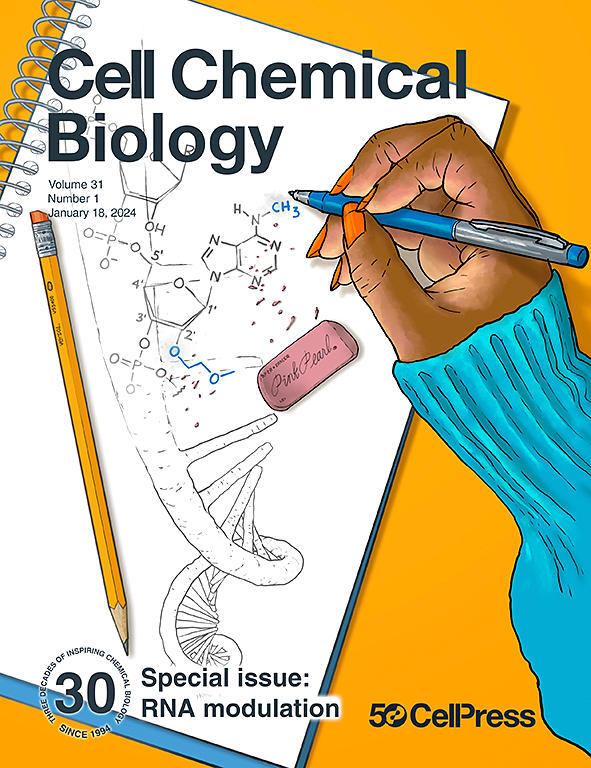破坏细胞内RAGE信号以对抗疾病中的病理性炎症
IF 7.2
1区 生物学
Q1 BIOCHEMISTRY & MOLECULAR BIOLOGY
引用次数: 0
摘要
晚期糖基化终产物受体(RAGE)在几种慢性疾病中引发炎症。在这一期的《细胞化学生物学》中,Theophall等人建立了肌动蛋白聚合酶诱导RAGE-Diaphanous 1复合物的结构模型,并发现了一个小分子,可以破坏这种相互作用,促进伤口愈合,减少体内炎症。本文章由计算机程序翻译,如有差异,请以英文原文为准。
Disrupting intracellular RAGE signaling to combat pathological inflammation in disease
The receptor for advanced glycation end products (RAGE) drives inflammation in several chronic diseases. In this issue of Cell Chemical Biology, Theophall et al.1 built a structural model of the actin polymerase-inducing RAGE-Diaphanous 1 complex and identified a small molecule that disrupts this interaction, enhancing wound healing and reducing inflammation in vivo.
求助全文
通过发布文献求助,成功后即可免费获取论文全文。
去求助
来源期刊

Cell Chemical Biology
Biochemistry, Genetics and Molecular Biology-Molecular Medicine
CiteScore
14.70
自引率
2.30%
发文量
143
期刊介绍:
Cell Chemical Biology, a Cell Press journal established in 1994 as Chemistry & Biology, focuses on publishing crucial advances in chemical biology research with broad appeal to our diverse community, spanning basic scientists to clinicians. Pioneering investigations at the chemistry-biology interface, the journal fosters collaboration between these disciplines. We encourage submissions providing significant conceptual advancements of broad interest across chemical, biological, clinical, and related fields. Particularly sought are articles utilizing chemical tools to perturb, visualize, and measure biological systems, offering unique insights into molecular mechanisms, disease biology, and therapeutics.
 求助内容:
求助内容: 应助结果提醒方式:
应助结果提醒方式:


